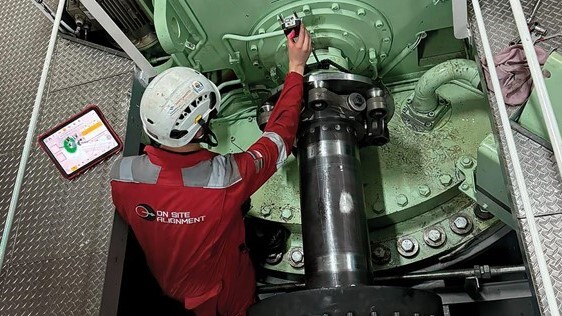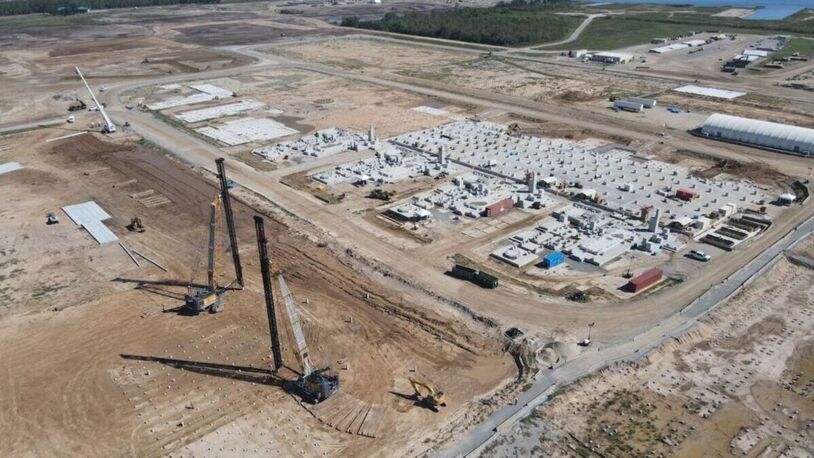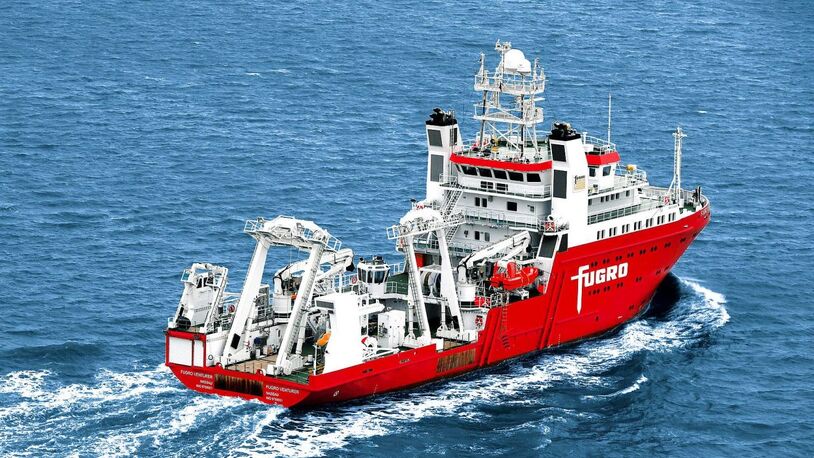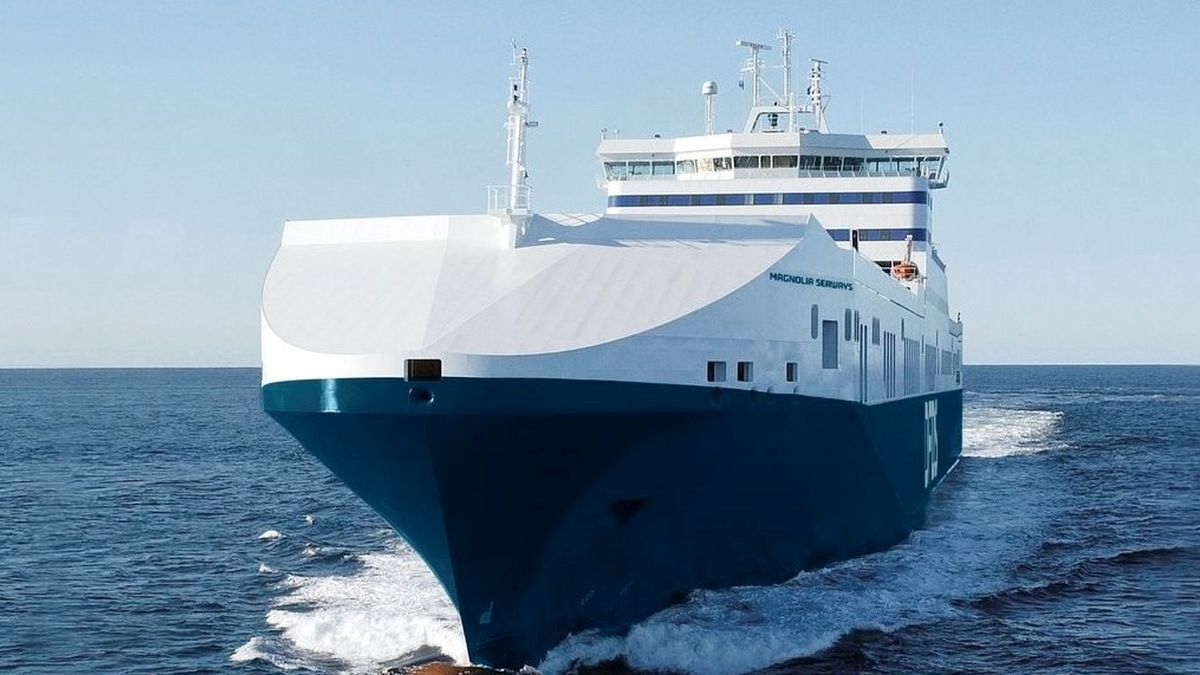Business Sectors
Events
Contents
NORTHERN EXPOSURE – Teekay readies LNG crew for the Arctic
Teekay LNG is breaking new ground, preparing to operate six LNGC newbuildings in the Russian Arctic. Karen Thomas visited the company in Glasgow to find out how the shipowner is preparing its crew for work in one of the world’s harshest, most sensitive environments
Deborah Sloan is talking about mittens. She’s an expert, these days, in the relative merits of different kinds of hand protection. She hands me a large black glove, pointing out the extra padding that shields the knuckles and finger joints.
“The brand is SealSkinz,” she says. “We found that it offers much better protection than the materials we originally tested. These gloves have fingers, as you see, but we’ll be ordering mittens as well.”
Since February 2015, Ms Sloan and her 25 Yamal LNG project task force colleagues have learned a lot about gloves. They’ve also learned that there are 21 types of ice, that Siberia is home to several thousand hungry polar bears and that reinforced bin-bags and a (non-metal) dustpan and brush can help you to survive if you abandon ship and are stranded on the ice, waiting to be rescued.
Teekay’s Yamal LNG task force is working to prepare, kit out and train officers and crew to work on the company’s six Arc 7 ice-class LNG carriers that will load cargoes from Yamal LNG at Sabetta in the Russian Arctic.
Team members added the project to their day jobs. It’s been a labour of love. “How often, in life, do you get a blank piece of paper and get to go away to scope out everything that needs to be done,” says team leader, Teekay Gas fleet director James Thomson.
The bright lobby of Teekay’s Glasgow offices is ablaze with the fluorescent yellow and orange workwear that makes up the polar personal protective equipment (PPE) kit. Supplied by maritime outfitter Scandia, the apparel will protect the crew from sub-zero temperatures and ferocious Arctic winds. These layers of thermal clothing make the difference between life and death.
The basics include thermal trousers with a jacket to match, a thermal boiler suit, thermal socks, insulated boots and a balaclava. As the temperatures drop – and during harsh Siberian winters, they can plunge to -40°C – Eduard Toll master Andrey Solomakha and the 32 men and one woman under his command will add extra layers: two-piece thermals, insoles and mittens or gloves to ward off the bitter cold. There are bright yellow immersion suits, for emergencies.
Then, there’s the group survival kits (GSKs) from Viking Lifesaving. Tents, sleeping bags, stoves, ice-shovels and rations – everything the crew need to survive for up to five days out on the ice if they have to abandon ship.
Russian safety standards require ships’ equipment and crew to survive temperatures of -40°C. Teekay has gone further, winterising all of its equipment for lows of -52°C, just to be safe.
Uncharted waters
The Novatek/Total-led Yamal project will load its first cargoes this autumn at Sabetta, inside Russia’s Arctic Circle, as the beginning of an effort that will produce 16.5 million tonnes a year (mta) of LNG.
Eduard Toll, due for delivery on 18 January, is the first of the six Arc 7 ice-class, 172,000m³ LNG carriers that Teekay and its partner China LNG have ordered to deliver cargoes from the project. The vessel started sea trials off South Korea on 19 August.
Teekay takes delivery of its second Arc 7 ship, Rudolf Samoylovich, in November next year. The second two newbuildings arrive in autumn 2019 and the final two in January and February 2020. The six ships are among 15 Arc 7 LNG carrier newbuildings – one for Sovcomflot, five for Dynagas and three for Mitsui OSK – that will load cargoes at ice-bound Sabetta.
This is uncharted water for LNG carriers. In March 2016, DNV GL hosted a hazard identification summit in Oslo for the Yamal LNG shipowners. However, the four went on to prepare separately to operate in the Arctic. That means four separate training regimes, four separate maintenance programmes, four individual procurement strategies.
Teekay drafted in Roger Barber, a retired master, as a consultant. It also tapped its in-house expertise, from the site team supervising construction at Daewoo Shipbuilding & Marine Engineering (DSME) in South Korea to colleagues in Canada familiar with icebound waters, who had access to knowledgeable local contacts.
Suppliers Cryostar, ABB and Wärtsilä advised the team on Arctic repairs and maintenance requirements. At first, at least, the Arc 7 fleet will enter drydock every two and a half years, rather than every five, reflecting the wear-and-tear that comes with operating in a harsh environment.
Communications is a challenge in remote northern waters. Teekay will fit larger VSAT antennas to help tackle potential blockages and will rely on Iridium Open Port as a failover communications system for areas of minimal satellite coverage.
It has chosen Transas integrated bridge systems for the Arc 7 vessels and has had to adjust its simulator training, which is modelled on Kongsberg equipment.
When LNG World Shipping visited Glasgow in early August, Teekay’s Gantt chart – an exhausting list of 1,154 individual tasks – showed the Yamal LNG preparations to be 93 per cent complete.
The fruit of those many hours of labour is Teekay’s Polar Water Operating Manual – or “our bible”, as Mr Thomson puts it. This 479-page tome and its 210-page appendix set out how Teekay ships and crew will operate in Arctic waters.
It covers everything from cargo-handling procedures to identifying and sourcing polar-critical spares, and from working safely in harsh weather to scheduling repairs and maintenance. It sets out how the Teekay Arc 7 fleet must operate to comply with the Polar Code, which took effect on 1 January.
“We see this as a work in progress,” Mr Thomson says. “Once we have our first ship operating, we expect constant feedback.”
In March, flag state the Bahamas Maritime Authority certified Teekay’s polar water survival course as meeting the requirements of the STCW Code.
Northern sea route
Sabetta will load cargoes year-round. In winter, the ice-class LNG carriers will tranship their loads in northwest Europe for onward delivery, using a fleet of 11 conventional LNG carriers, including the 174,000m³ Yamal Spirit.
In summer, when northern sea route ice thins to 2.1m the ice-class LNG carriers have the option to sail this path to deliver direct, to customers in Japan, China and South Korea.
Following this course cuts time to market to 14-21 days, depending on the shipping lane. That compares with 27/28 days to tranship Yamal LNG cargoes via northwest Europe to Asia via Suez.
The northern sea route is a daunting prospect. Before Sovcomflot-owned Christophe de Margerie set sail to test the path this summer, just four LNG carriers had completed the voyage. Geography aside, there are political constraints. Russia has 10 accident and emergency stations along the northern sea route – but these military installations are off-limits to commercial shipping.
Russia will deploy the two Rosatomflot nuclear-powered icebreakers, based at Archangel and Murmansk to rescue ice-bound ships. These can reach any point along the northern sea route within 72 hours, Mr Thomson says. Russia may also build a network of small civilian medical centres along the route.
Safety first
These constraints explain why Teekay has launched the only specialist Arctic survival training course for seafarers outside the Russian Navy.
ETE, a consultancy formed by military veteran Paul Hart and Arctic explorer Antony Jinman, created the course with Teekay. The pilot took place at a local indoor ski centre in Scotland. The Eduard Toll and Rudolf Samoylovich crew will fly to South Korea for snow training. Officers have had additional training in St Petersburg and Finland.
“There were so many things that we learned along the way,” Ms Sloan says. “We had to find eyewear to avoid the risk of snow blindness and everything in the kits must be ice-proof, reducing the crew's exposure to metal.”
ETE tested the Teekay kit on a trip to the Antarctic, hence the last-minute switch to Sealskin gloves. It is teaching the crew some unexpected Arctic survival skills, not least how to deal with – or rather, not deal with – nosey and hungry polar bears. As the Siberian ice melts, the bears compete for shrinking space, posing a very real danger to seafarers.
None of this comes cheap. There is not much change from US$3,000 to kit out each ship with personal survival kits. The group survival kits cost a similar amount again.
Each Arc 7 vessel costs US$350 million, which includes US$100 million worth of winterisation equipment, plus the US$15 million it costs to fit each ship with three high-powered Azipod propulsion systems. A conventional LNG carrier costs some US$200 million.
The ships feature enclosed forecastles and sterns, and covered walkways and winches, to protect the crew from the elements.
Working in sub-zero temperatures is not for everyone. Yet Teekay has had no trouble recruiting for the Arctic. Crew from the existing Teekay pool have come forward, filling the vacancies in-house.
Eduard Toll masters Capt Solomakha and Ghaurav Dhinsa will command an international crew, including several Russian officers.
Mr Thomson laughs at the notion that Teekay offered its seafarers extra money to join the Arc 7 fleet, or that it’s a hardship posting. It hasn’t, and it won’t be.
“There’s a swimming pool and even a sauna on board,” he says.
Three years in, Teekay has nearly finished preparing for the Yamal LNG project, pending ship trials. The Arctic project team’s enthusiasm is infectious. The Yamal LNG page on Teekay's social media site Yammer has 220 followers.
Several threads feature a Siberian comedian, who shoots parody videos of Bruno Mars and Taylor Swift in the Arctic wastes. Don't knock it. Siberian comedy videos will help the seafarers to pass the time in the frozen north.
Ms Sloan and Mr Thomson will know that the long hours and dollars spent were worth it when Eduard Toll and its five sister ships sail safely through Arctic waters, their cargo and crew prepared for any emergency.
Along the way, it’s been fun.
“This,” Mr Thomson concludes, “is the coolest thing that Teekay has done in years.”
Teekay’s Yamal LNG planning mission, in figures
6 ships
34 crew on each
55 berths per ship
26 project team members
5 working groups
176 people consulted
43 bodies consulted
13,500 emails
| Teekay LNG's Yamal LNGC newbuildings | ||||||
| Vessel type | Name/hull number | Percentage owned | Capacity, m³ | Delivery date | Shipbuilding | |
| 1 | Arc 7 ice-breaker | Eduard Toll | 50% | 172,000 | 2018 | Daewoo Shipbuilding & Marine Engineering (DSME) |
| 2 | Arc 7 ice-breaker | Rudolf Samoylovich | 50% | 172,000 | 2018 | Daewoo Shipbuilding & Marine Engineering (DSME) |
| 3 | Arc 7 ice-breaker | Hull 2430 | 50% | 172,000 | 2019 | Daewoo Shipbuilding & Marine Engineering (DSME) |
| 4 | Arc 7 ice-breaker | Hull 2431 | 50% | 172,000 | 2019 | Daewoo Shipbuilding & Marine Engineering (DSME) |
| 5 | Arc 7 ice-breaker | Hull 2433 | 50% | 172,000 | 2020 | Daewoo Shipbuilding & Marine Engineering (DSME) |
| 6 | Arc 7 ice-breaker | Hull 2434 | 50% | 172,000 | 2020 | Daewoo Shipbuilding & Marine Engineering (DSME) |
| Total capacity, m³ | 1,032,000 | |||||
| Source: Teekay LNG, September 2017 | ||||||
| Ice-class LNG carriers booked for Yamal LNG project | |||||||||
| Vessel type | Name/hull number | Shipyard | Owner/s | Capacity, m³ | Delivery date | Containment | Class | Propulsion | |
| 1 | Arc 7 ice-breaker | 2433 | DSME | Teekay/CLNG | 172,000 | Feb-20 | GTTNo96 | BV/RS | DFDE |
| 2 | Arc 7 ice-breaker | 2434 | DSME | CSDC/MOL | 172,000 | Dec-19 | GTTNo96 | BV/RS | DFDE |
| 3 | Arc 7 ice-breaker | 2430 | DSME | Teekay/CLNG | 172,000 | Jan-19 | GTTNo96 | BV/RS | DFDE |
| 4 | Arc 7 ice-breaker | 2431 | DSME | Teekay/CLNG | 172,000 | Jan-19 | GTTNo96 | BV/RS | DFDE |
| 5 | Arc 7 ice-breaker | 2427 | DSME | Dynagas | 172,000 | May-18 | GTTNo96 | BV/RS | DFDE |
| 6 | Arc 7 ice-breaker | 2428 | DSME | Dynagas | 172,000 | Aug-18 | GTTNo96 | BV/RS | DFDE |
| 7 | Arc 7 ice-breaker | 2429 | DSME | Dynagas | 172,000 | Dec-18 | GTTNo96 | BV/RS | DFDE |
| 8 | Arc 7 ice-breaker | 2426 | DSME | CSDC/MOL | 172,000 | Mar-18 | GTTNo96 | BV/RS | DFDE |
| 9 | Arc 7 ice-breaker | 2432 | DSME | CSDC/MOL | 172,000 | Dec-18 | GTTNo96 | BV/RS | DFDE |
| 10 | Arc 7 ice-breaker | Rudolf Samoylovich | DSME | Teekay/CLNG | 172,000 | Jan-18 | GTTNo96 | BV/RS | DFDE |
| 11 | Arc 7 ice-breaker | 2424 | DSME | Teekay/CLNG | 172,000 | Jan-18 | GTTNo96 | BV/RS | DFDE |
| 12 | Arc 7 ice-breaker | Boris Vilkitsky | DSME | Dynagas | 172,000 | Oct-17 | GTTNo96 | BV/RS | DFDE |
| 13 | Arc 7 ice-breaker | Fedor Litke | DSME | Dynagas | 172,000 | Jan-18 | GTTNo96 | BV/RS | DFDE |
| 14 | Arc 7 ice-breaker | Eduard Toll | DSME | Teekay/CLNG | 172,000 | Dec-17 | GTTNo96 | BV/RS | DFDE |
| 15 | Arc 7 ice-breaker | Christophe de Margerie | DSME | Sovcomflot | 172,000 | Nov-16 | GTTNo96 | BV/RS | DFDE |
| Total capacity, m³ | 2.58 | ||||||||
| Source: LNG World Shipping/VesselsValue, September 2017 | |||||||||
Related to this Story
Events
Maritime Environmental Protection Webinar Week
Cyber & Vessel Security Webinar Week
The illusion of safety: what we're getting wrong about crews, tech, and fatigue
Responsible Ship Recycling Forum 2025
© 2024 Riviera Maritime Media Ltd.













